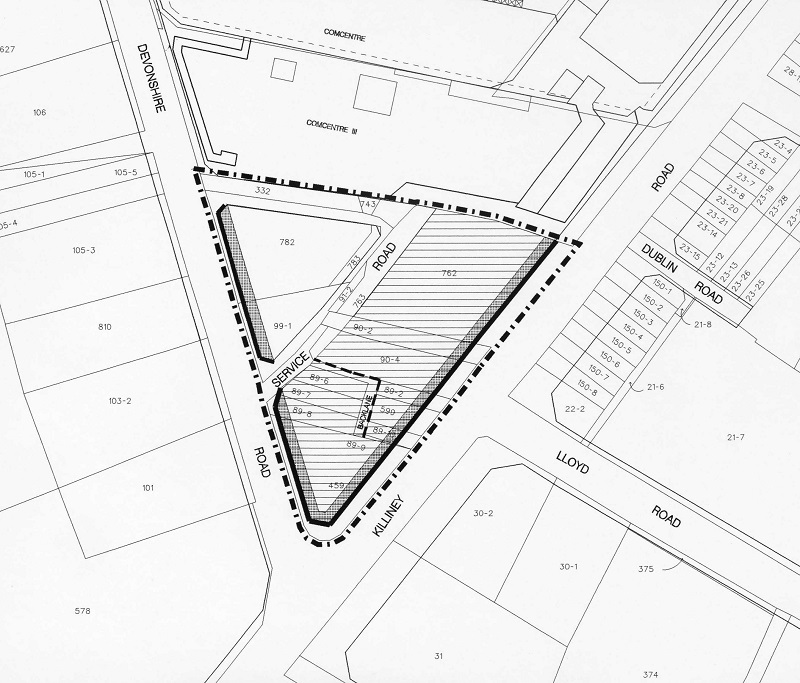Block plan
A block plan usually shows the siting of buildings as blocks laid out on maps of the surrounding area. A range of standard mark ups can be used to depict boundaries, roads and other details.
Depending on the size of the project, typical scales of block plans are:
- 1 : 2500
- 1 : 1250
- 1 : 500
It is common for the term ‘block plan’ to be used interchangeably with ‘site plan’. They are both similar in that they illustrate the development site along with the position of the proposed building(s), as well as any access roads, vegetation, utilities, and so on. They typically indicate the development site and access in red outline, as well as any other land owned by the developer in blue outline.
However, a site plan generally shows in more detail the contents and extent of the site for an existing or proposed development, whereas a block plan shows less detail of the site and more of the surrounding area. In planning applications, block plans can help the local authority determine the possible impacts that the proposed project may have on the wider area.
If it is a large site or if a wider indication of the impact on the surrounding area is necessary, then a location plan may be prepared, identifying where the site is, but giving little detail for the development itself.
[edit] Related articles on Designing Buildings
Featured articles and news
RTPI leader to become new CIOB Chief Executive Officer
Dr Victoria Hills MRTPI, FICE to take over after Caroline Gumble’s departure.
Social and affordable housing, a long term plan for delivery
The “Delivering a Decade of Renewal for Social and Affordable Housing” strategy sets out future path.
A change to adoptive architecture
Effects of global weather warming on architectural detailing, material choice and human interaction.
The proposed publicly owned and backed subsidiary of Homes England, to facilitate new homes.
How big is the problem and what can we do to mitigate the effects?
Overheating guidance and tools for building designers
A number of cool guides to help with the heat.
The UK's Modern Industrial Strategy: A 10 year plan
Previous consultation criticism, current key elements and general support with some persisting reservations.
Building Safety Regulator reforms
New roles, new staff and a new fast track service pave the way for a single construction regulator.
Architectural Technologist CPDs and Communications
CIAT CPD… and how you can do it!
Cooling centres and cool spaces
Managing extreme heat in cities by directing the public to places for heat stress relief and water sources.
Winter gardens: A brief history and warm variations
Extending the season with glass in different forms and terms.
Restoring Great Yarmouth's Winter Gardens
Transforming one of the least sustainable constructions imaginable.
Construction Skills Mission Board launch sector drive
Newly formed government and industry collaboration set strategy for recruiting an additional 100,000 construction workers a year.
New Architects Code comes into effect in September 2025
ARB Architects Code of Conduct and Practice available with ongoing consultation regarding guidance.
Welsh Skills Body (Medr) launches ambitious plan
The new skills body brings together funding and regulation of tertiary education and research for the devolved nation.
Paul Gandy FCIOB announced as next CIOB President
Former Tilbury Douglas CEO takes helm.
UK Infrastructure: A 10 Year Strategy. In brief with reactions
With the National Infrastructure and Service Transformation Authority (NISTA).























